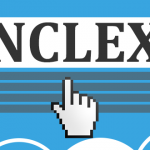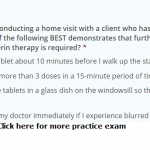Reduction of risk potential involves ways in which you can help to reduce the likelihood that clients will develop complications or health problems related to existing conditions, diagnostic tests, treatments, or other procedures. On the NCLEX-RN®exam, you can expect 12 percent of the questions to relate to Reduction of Risk Potential. Exam content for this category includes, … [Read more...] about NCLEX SATA Quiz: Reduction of Risk Potential
NCLEX Quiz: Basic Care and Comfort
NCLEX SATA Quiz: Basic Care and Comfort
NCLEX SATA Questions: Pharmacological and Parenteral Therapies
NCLEX Quiz: Pharmacological and Parenteral Therapies
On the NCLEX-RN® exam, you can expect 15 percent of the questions to relate to the Pharmacological and Parenteral Therapies subcategory. Exam content includes, but is not limited to, the following areas: Adverse effects/contraindications/side effects/interactions Blood and blood products Central venous access devices Dosage calculation Expected … [Read more...] about NCLEX Quiz: Pharmacological and Parenteral Therapies



